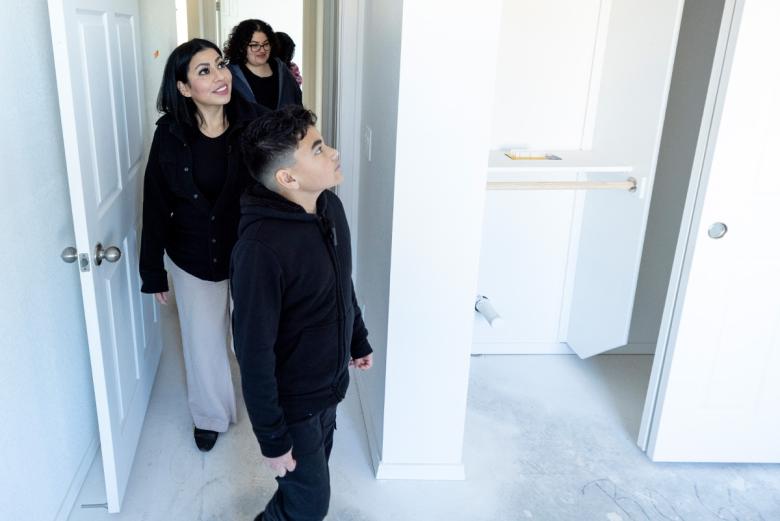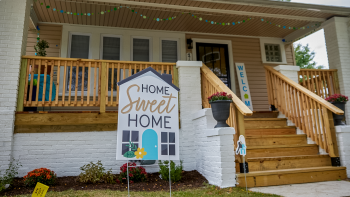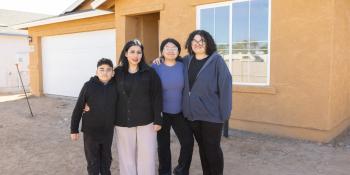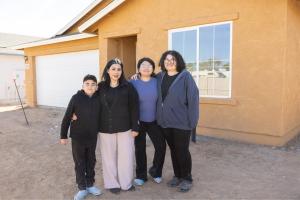Now that Alondra is settling into her new Habitat for Humanity home, she loves walking to the nearby park with her children, 18-year-old Sindy, 12-year-old Andrea and 9-year-old Jayden. Having a recreation area where the children can play is priceless, and it’s good for Alondra too.
“We can do physical activities here. Walk, run, things like that,” Alondra says. “I think we will be healthier.”
Partnering with Habitat to invest in home and stability
Before moving into their Habitat home, Alondra, a community health worker, and her family lived in an unsafe neighborhood. Noisy gatherings in their apartment complex kept the children from studying.
Alondra wanted to become a homeowner, but she couldn’t find a decent home that she could afford. That’s when she remembered the advice of a co-worker who had built their home with Habitat. “She told me about Habitat years ago, but suddenly when I was in a point that I was like, ‘Something has to change.’ I don’t know why or how, but I remember her word saying, ‘Apply,’” Alondra says.




